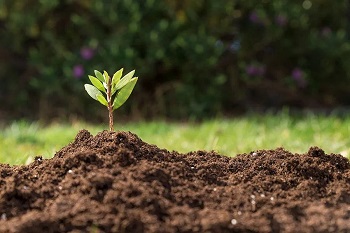Superfund Research Program
April 2021

The NIEHS Superfund Research Program (SRP) welcomes 10 newly funded individual research projects. They are incorporating new advances in materials science to optimize bioremediation of contaminants in soil, sediment, or water. Bioremediation is a cost-effective, energy efficient approach involving bacteria, fungi, and plants to break down and remove hazardous substances from the environment.
These projects may offer new breakthroughs to advance sustainable solutions for hazardous substances in the environment.
“These research grants combine novel materials science and engineering approaches with bioremediation,” says Health Scientist Administrator Heather Henry, Ph.D. “They hold promise to improve the applicability of bioremediation by accelerating the speed of the process, preventing the formation of unintended byproducts, or facilitating the ability to clean up co-contaminants simultaneously.” To learn more about these research projects, see this SRP fact sheet.
Developing sorbents to enhance bioremediation

Using sorbent materials, researchers are improving techniques to remove contaminants effectively and sustainably from the environment:
- Researchers at Florida State University, led by Youneng Tang, Ph.D., and Yuexiao Shen, Ph.D., are developing novel sorbents to selectively bind chlorinated volatile organic compounds (VOCs) and 1,4-dioxane while also promoting the growth of microbes that break down these contaminants.
- Researchers at the University of Maryland-Baltimore County led by Upal Gosh, Ph.D., are developing carbon-based sorbents to enhance the ability of bacteria to break down mixtures of chlorinated organic contaminants, such as chloroethene and polychlorinated biphenyls, in sediments and groundwater.
- Led by Timothy Mattes, Ph.D., researchers at the University of Iowa are investigating how activated carbon can be used to enhance the performance of bacteria used to breakdown halogenated pollutants, such as chloroethene.
Using microorganisms to reduce environmental exposures
Researchers are using nanotechnology and other materials science approaches to enhance the activity of microorganisms to break down contaminants.
- At Texas A&M AgriLife Research, Yuan Dai, Ph.D., Joshua Yuan, Ph.D., and Gregory Lowry, Ph.D., are designing a system using nanotechnology to speed up the growth and enhance the activity of fungi that break down persistent organic pollutants, such as per- and polyfluoroalkyl substances (PFAS).
- Led by Diana Aga, Ph.D., researchers at the State University of New York at Buffalo are combining nanomaterials made of graphene and metal nanoparticles with bacteria to break down PFAS without generating toxic byproducts.
- At Princeton University, researchers led by Peter Jaffe, Ph.D., are developing nanoparticles made of the mineral ferrihydrite to stimulate the activity of bacteria to break down PFAS in contaminated drinking water.
- At the University of California Riverside, researchers led by Yujie Men, Ph.D., and Chong Liu, Ph.D., are designing nanomaterials powered by solar electricity that accelerate the activity of bacteria used to cleanup halogenated contaminants and 1,4-dioxane.
- Oregon State University researchers, led by Lewis Semprini, Ph.D., Michael Hyman, Ph.D., and Willie Rochefort, Ph.D., are developing a strategy to use bacteria encapsulated with a slow-release compound in hydrogel beads to break down complex mixtures of contaminants, such as VOCs, into non-toxic products.
Using plants to clean up soil
SRP researchers are leveraging advances in materials science to improve how plants remove hazardous substances from soil:
- Yale University researchers, led by Vasilis Vasiliou, Ph.D., Christy Haynes, Ph.D., and Jason White, Ph.D., are developing nanomaterials customized with an affinity for PFAS to enhance the ability of hemp plants to remove PFAS from soil. The team is also exploring how their nanomaterials can be applied to other plant species and contaminants.
- Led by Om Parkash Dhankher, Ph.D., Venkataraman Dhandapani, Ph.D., Jason C. White, Ph.D., and Baoshan Xing, Ph.D., researchers at the University of Massachusetts are developing a genetically engineered crop that can take up arsenic from soil and combining it with nano-sulfur to enhance the process.


